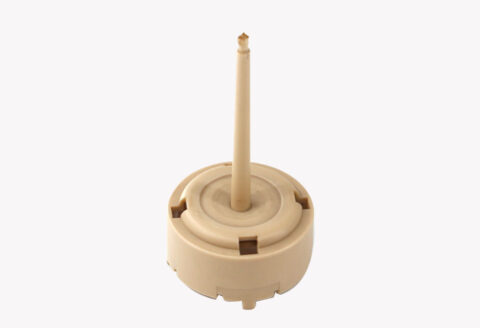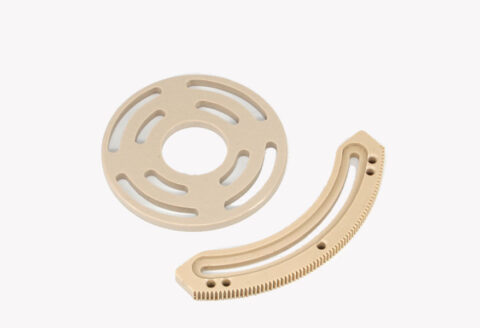
Clarify The Color Matching Goals
- Have a clear and comprehensive understanding of the samples to be prepared. Because, the sample obtained will not be the only one. Generally, it may be plastic parts, panton numbers, photos, leather, metal parts, etc., and everything with color may be something you need to know.
- According to the plastic raw material, distinguish the soft and hard glue toner. This narrows the range of toners.
- Are there any special requirements for weather resistance, chemical resistance, with or without fillers or other additives, and environmental protection?
- Choose toner or masterbatch according to the molding process (eg: medium temperature toner or high temperature resistance)
Analyzing Hue
The principles that should be followed in color matching: first adjust the depth, then color the hue, and finally fine-tune the color difference; the depth can be adjusted with black and white powder and the shade and saturation of the toner itself. Steps to analyze the hue:
1.Observe the transparency of the sample
Generally divided into transparent, translucent and opaque (also known as solid color, very solid color refers to low transparency), there are two ways to adjust the transparency, one is to increase the titanium dioxide, the other is to increase the saturation of the toner . (PP flame retardant masterbatch)
2.Observe the surface of the sample
- If the surface of the sample is anti-white, that is, there is some white light in the solid color, it means that the sample contains titanium dioxide. If the anti-white is very heavy, it means that the content of titanium dioxide must be high.
- If the sample is very bright, that is, the chroma is high, the amount of titanium dioxide is less, and the amount of color toner is more. (The content of toner is high, the color is bright, and the color is dark; on the contrary, the color is light and the brightness is low)
- If the color of the sample surface is deep and bright, and the surface is reversed, it can only increase the amount of titanium dioxide and increase the amount of toner for deployment.
Note: If the sample is wet and transparent, it is necessary to select organic pigments or dyes with good transparency. If it is opaque or translucent, it is necessary to judge and estimate the titanium dioxide content in the sample according to actual experience, and then determine whether to add black and its proportion according to the hue.
How To Determine The Color Formula?
- First determine the content of titanium dioxide, which is the key to the technology. Because, once the content of titanium dioxide changes, the color will change greatly, and the dosage of other toners will change accordingly;
- Analyze the hue range of the color matching sample which is composed of several colors, which is the main color, which is the secondary color, and what is the proportion of each. (Try to choose a pigment that is similar to the color of the sample. For example, if the color of the sample is red, if the sample is yellowish, choose bright red, and if it is bright, choose bright red or fluorescent red as the main color);
- Observe the brightness of the sample, and consider whether to add fluorescent toner or whitening agent.
Trial Match
- According to the previous analysis, select the appropriate toner and structure formula;
- According to the category of raw materials, choose soft glue or hard glue, whether it is resistant to medium temperature or high temperature toner;
- If the pigment is selected according to the transparency, determine the content of titanium dioxide and the degree of black and gray, and finally determine the hue, depth and brightness to select the toner variety.
Formulate Formula
- Determine the proportion of black toner
- Determine the proportion of the main color toner
- Determine the proportion of titanium dioxide
- Determine the proportion of secondary color toner (the proportion of fluorescent toner or whitening agent is required)
Injection Proofing / Fine-Tuning
Note: Generally, 600g resin is used for preparation. According to the formula ratio, mix the toner and resin evenly, and then use the injection molding machine to make the board. After the plate is made, after the sample is completely cooled, it is compared with the color of the sample, and the amount of toner is added or subtracted according to the hue, depth and brightness of the color of the sample, and the test is repeated until it meets the expected color matching requirements.
Problems That Should Be Paid Attention To When Adjusting Different Color Systems
Example: white
- In general, the finer the titanium dioxide particles, the better, and the higher the tinting strength. Commonly used titanium dioxide DuPont R105;
- White is generally used in light-colored plastic products, usually adding a large amount of titanium dioxide and a small amount of pigment to configure;
- To adjust the special white, choose titanium dioxide with blue light in the background;
At the same time, to achieve fast, accurate and economical plastic color matching, the following principles should be followed:
- The principle of “small amount”, the less variety of colorants used in plastic color matching, the better, such as permanent orange pigment. In short, if you can solve the problem with two colors, you don’t need three colors. Because the selection of more varieties is not only troublesome for color matching, but also easy to bring in complementary colors to make the color dark. In addition, the more varieties are selected, the greater the systematic errors brought by these varieties to color matching samples and production due to factors such as dispersion and tinting strength.
- The principle of “similarity”, plastic color matching should pay attention to the selection of varieties with similar heat resistance. Otherwise, due to the large difference in heat resistance and stability, the color change will be caused by the temperature change during processing. Plastic color matching should pay attention to the selection of varieties with similar dispersion. Otherwise, the dispersibility difference is too large, and the color change will be caused by the shear force change during the processing. Therefore, it is recommended that when choosing color matching pigments, try to use a manufacturer’s pigments. For example, when using apricot yellow, the organic pigments used are red pigments and permanent orange pigments of Yuhong pigments. Then, when choosing yellow pigments, try to choose Yuhong pigments as well. rainbow paint. Yuhong Pigment has been focusing on the “easy dispersion” of pigments for 20 years, leading the industry. Plastic color matching should pay attention to the selection of pigments with similar properties, that is, varieties with similar light resistance and weather resistance, otherwise the prepared plastic products will become unrecognizable after outdoor exposure due to too much difference in performance. (PP flame retardant masterbatch)
- The principle of “complementary colors”. When color matching, the introduction of complementary colors should be prevented, otherwise the original gloss will be darkened and the brightness of the color will be affected. Complementary colors, also known as complementary colors and secondary colors, are usually composed of primary colors other than primary colors as complementary colors. For example, orange is a color combination of red and yellow, and blue is a complementary color. At the same time, pay attention to the different shades of pigments when color matching, and avoid using complementary color shade pigments to match colors, otherwise the saturation will be reduced and the color will be dark. From the above introduction, we can see that plastic color matching is a complex system engineering. How to adjust the various variables of the colorant can now achieve the known color visual characteristics, the price is reasonable and feasible, and compound after processing and molding and in use requirements, is an extremely complex issue.

